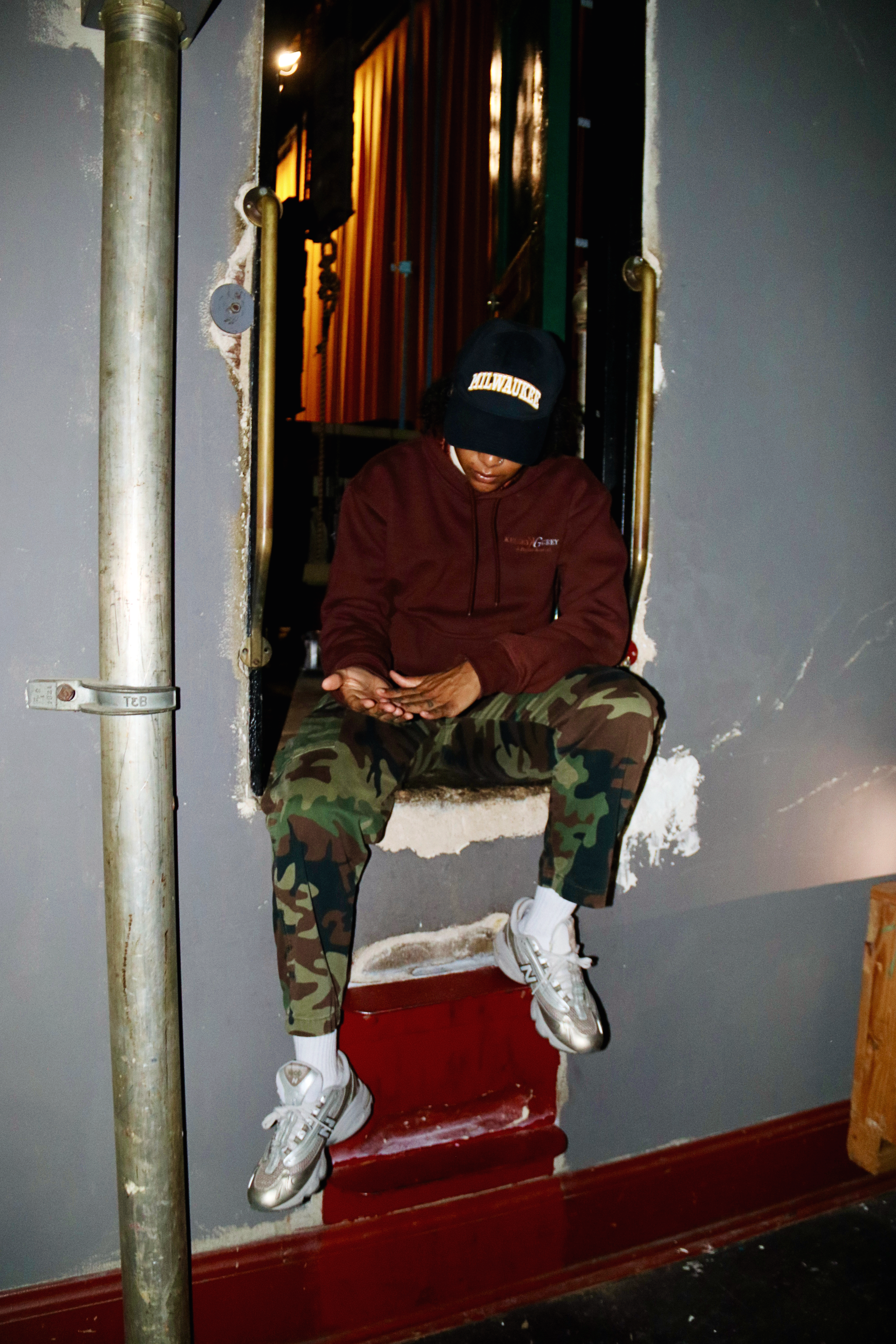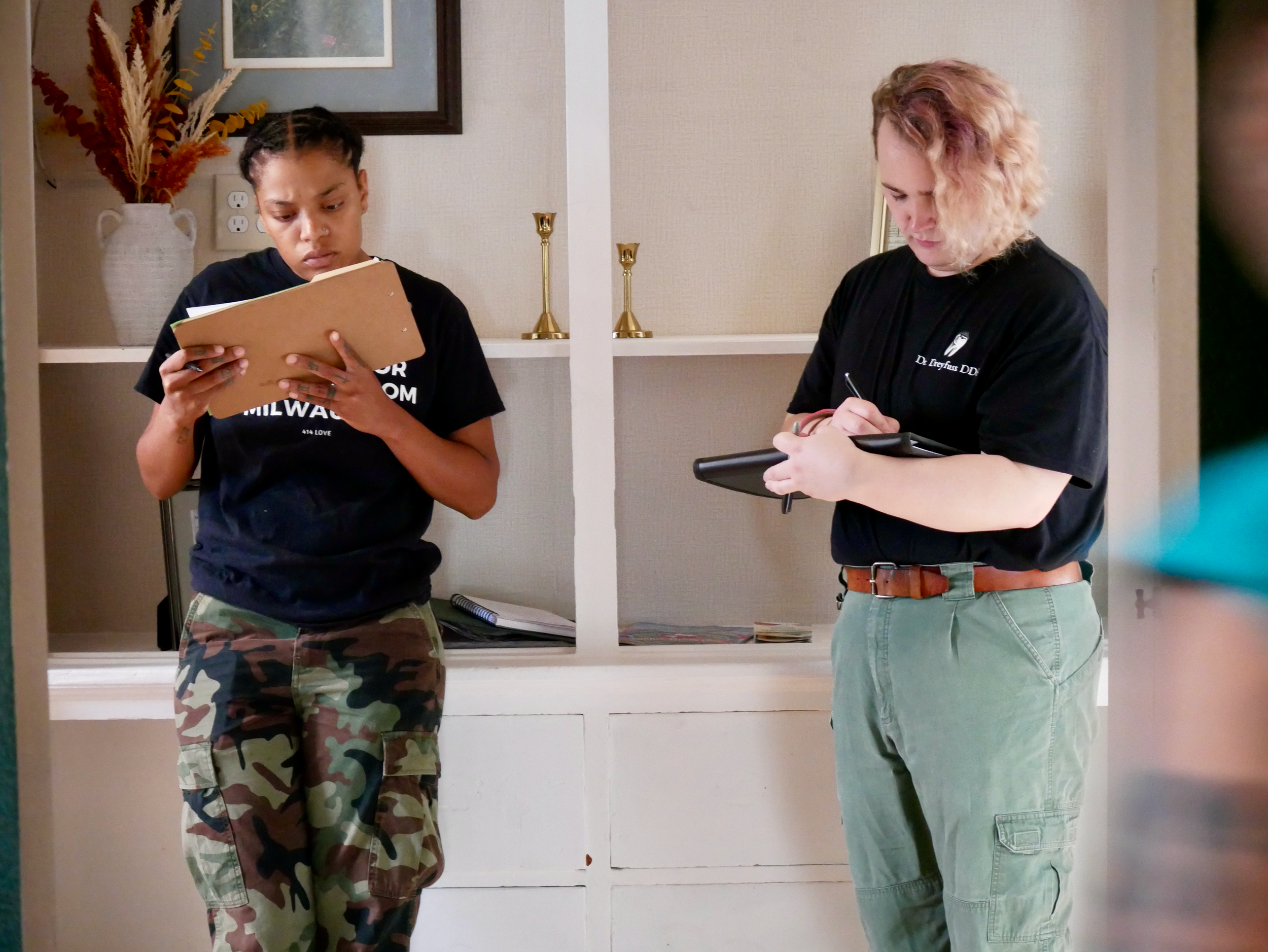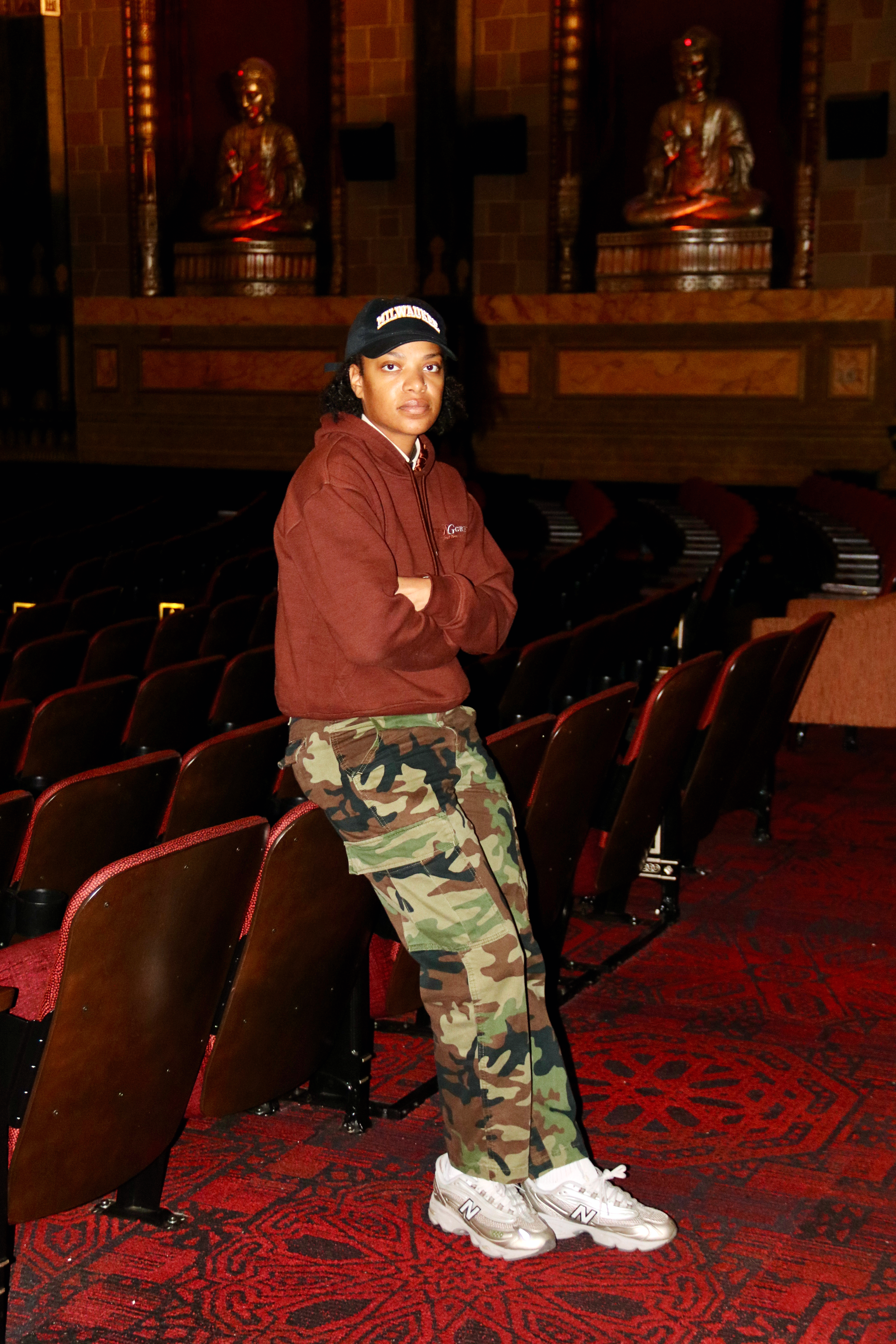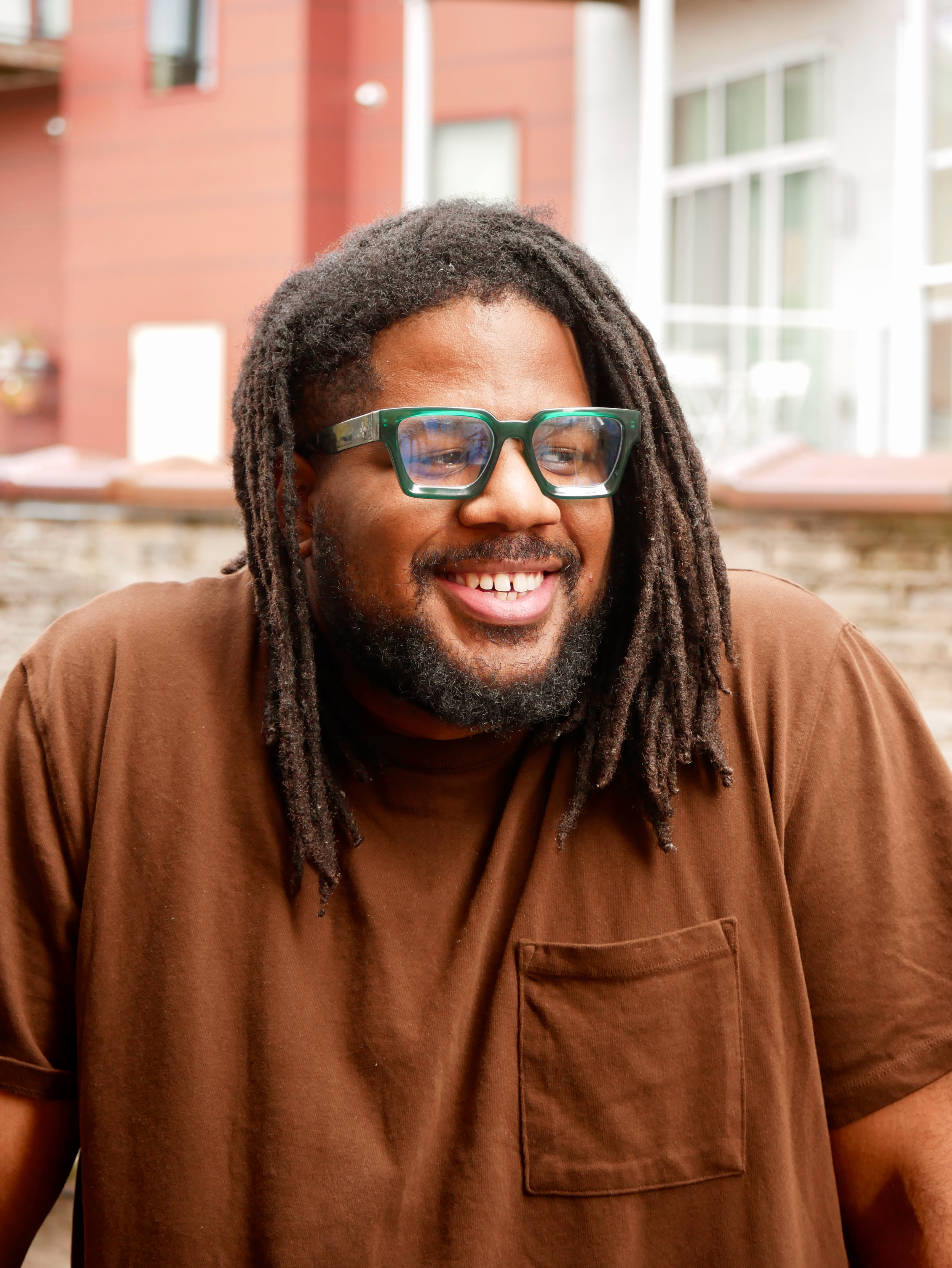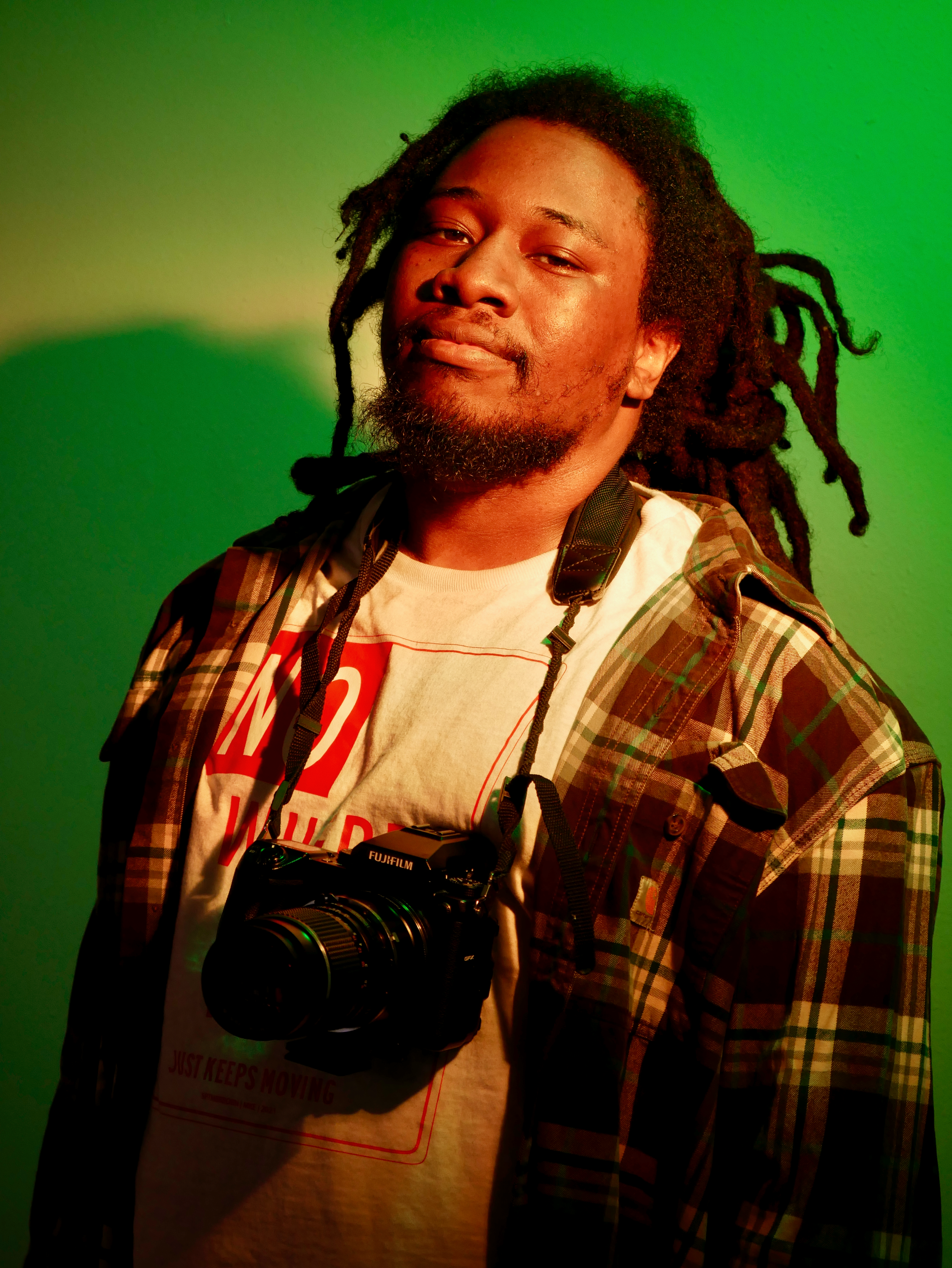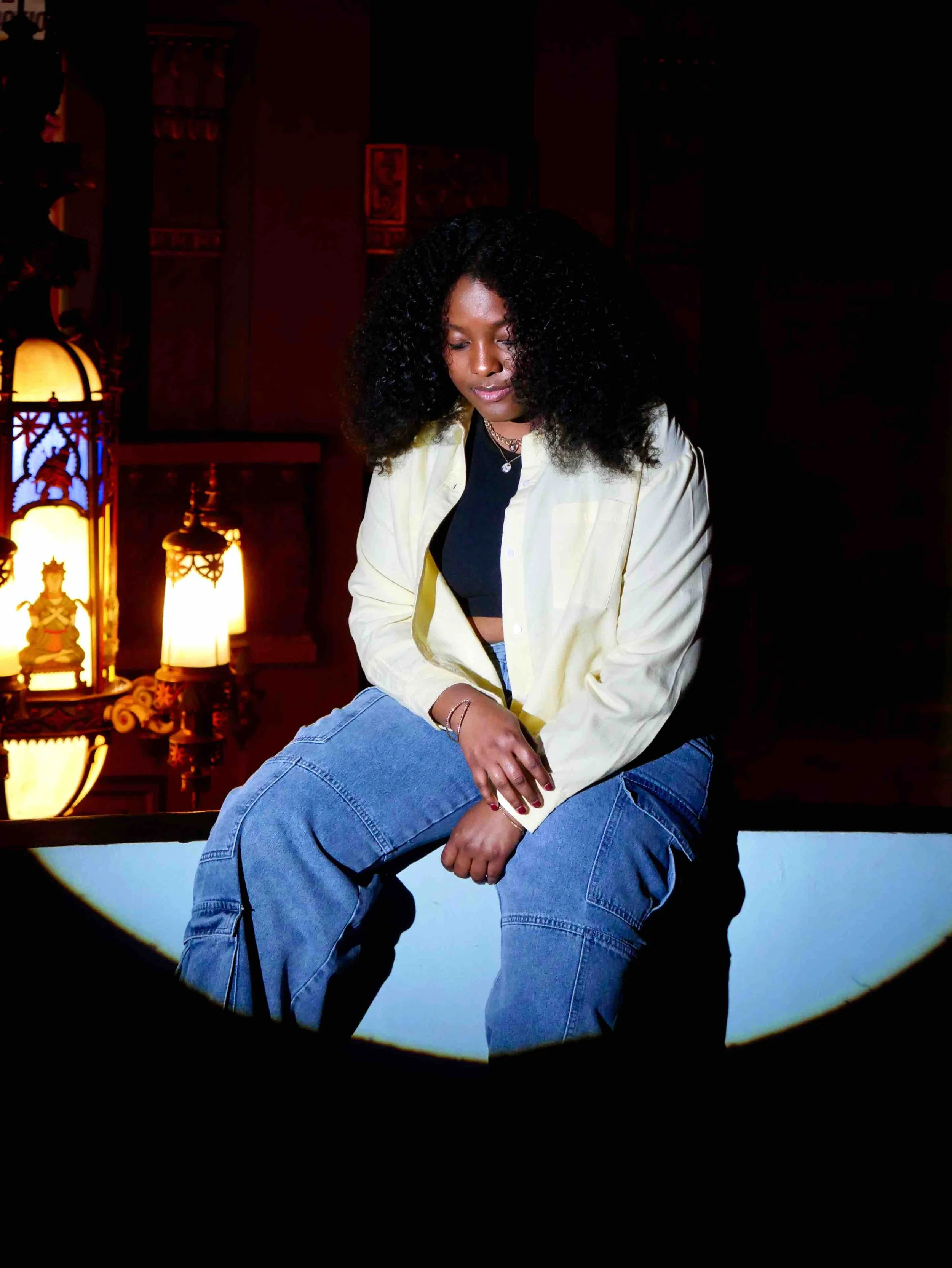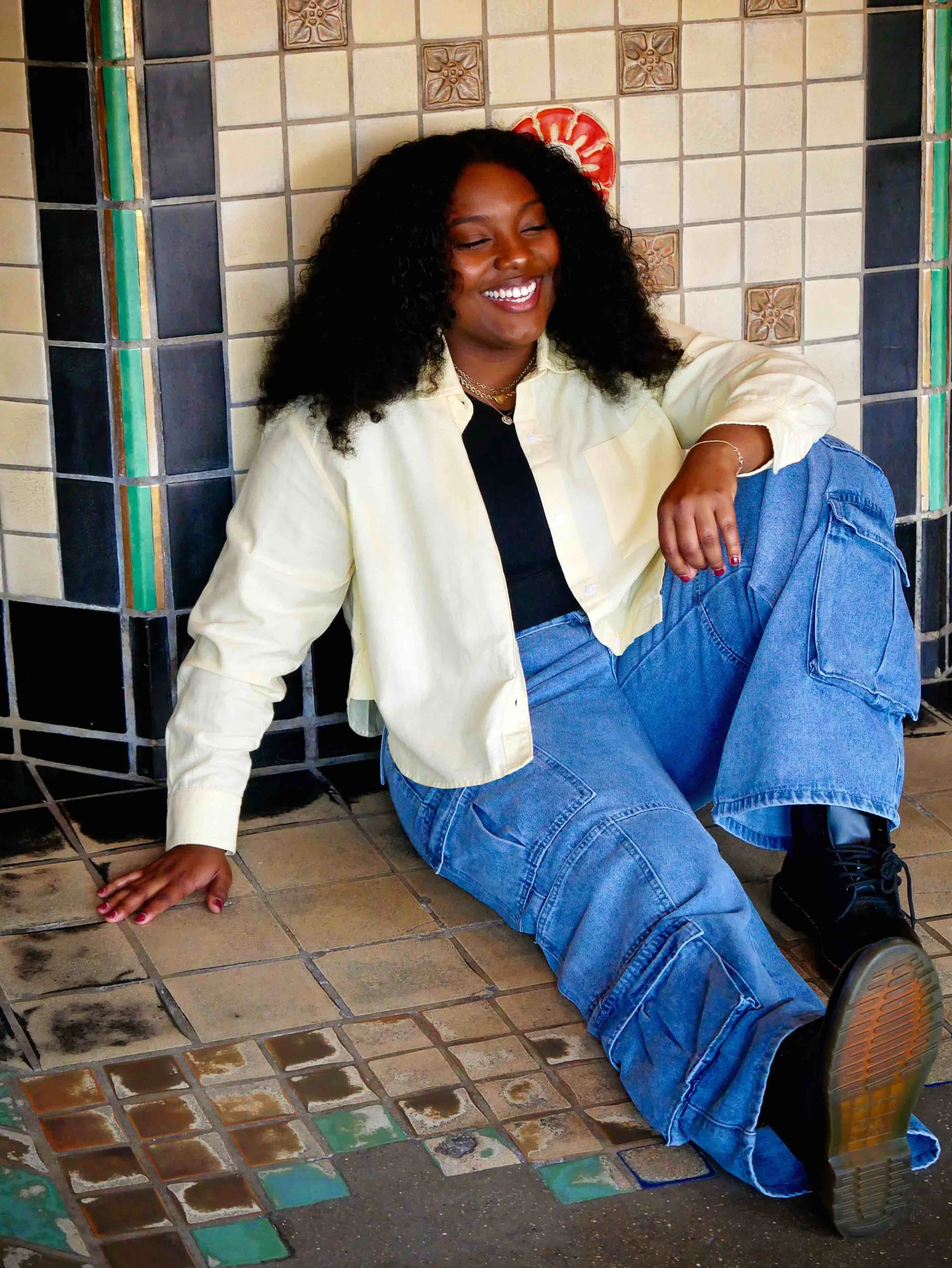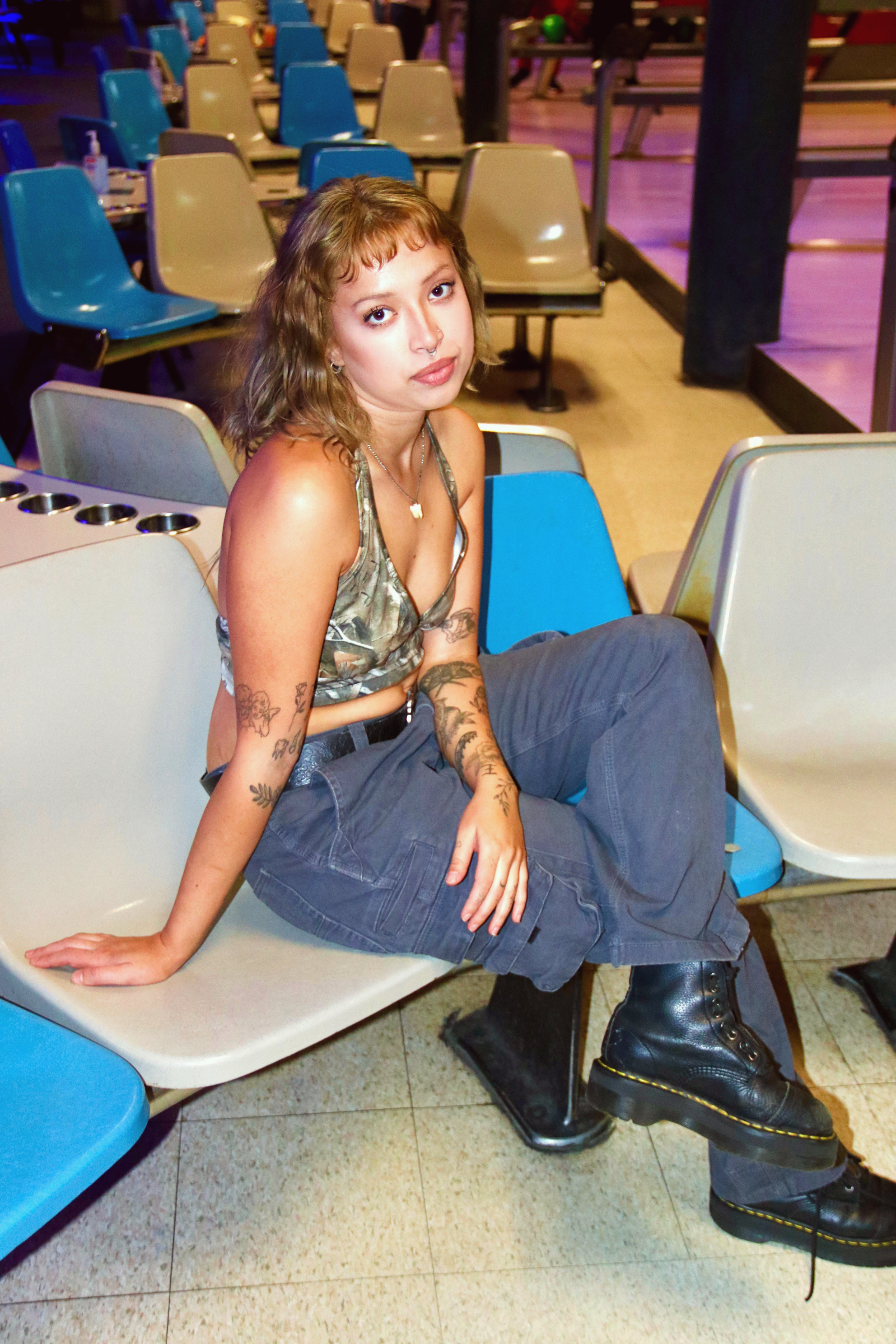Milwaukee’s Most Humble Never Disappoints: On Set With Tiera Trammell | By /CW Guest Writer Jolee Mallmann
/Tiera Trammell comes off quiet, confident and quite sure of herself. The first few times I met Tiera, I was a little struck by her abundant aura of cool to introduce myself. With every mutual friend and filmmaker I knew between us, I found myself asking, “What is Tiera like to work with?” Tiera Trammell was a total enigma to me. So many filmmakers and artists in the city follow a public route; you know who they are because they tell you. But Tiera seemed to let her work speak for herself. I just hadn’t had the opportunity to work with her yet.
Finally, I had the opportunity to work with Tiera on the set of a mutual friend and filmmaker Breanna R. Taylor’s short film In Holding. I joined the set for SFX Makeup and Tiera was a Producer. It was a perfect opportunity to really see how well she coordinated the chaos of a film set and honestly, I was immediately impressed. While I was able to stay parked on set behind the scenes doing makeup for talent, I saw Tiera and the entire production team running circles around the entire location making sure everything happened on time, the way Bre had hoped it would. After In Holding, I had my own plans to shoot a second short film and knowing the direction I wanted this production to take, I knew I wanted to invite Tiera to join the crew.
Trusting someone to join your set for the first time on an indie production can be a gamble even if you have met them in person before. When the budget is low you can’t expect a lot from people. To give their free time away or even take off for your low budget short film is a lot to expect. Tiera showed up every day of filming with a clear head on her shoulders. While I was just getting to know her between the busy tasks of a filming day, she kept me oriented as a director and her personality was so easy to bring into the flow of my set. I could trust her to keep us afloat as our 2nd AD, but it was more than that. She read the script notes and stayed in the scene with the actors in a lot of key moments that helped motivate our story. The suggestions Tiera made during filming made me wish I had her involved in the writing of the script. What sets Tiera apart from a lot of filmmakers and creatives in my opinion is her connection to story and comedy. She’s a friend that I see willing to help the fellow creatives in her life, but Tiera is more than a hard worker, she’s a filmmaker with a clear narrative vision.
I think we will be hearing a lot about Tiera Trammell and the work she’s a part of in the upcoming year. Milwaukee is very lucky to have someone as kind and community-driven as her behind the scenes but I’m personally hoping to see Tiera take the lead in more Director’s roles in the near future. This interview has been a long time coming, so I really hope you enjoy learning a little more from Tiera.
Where are you from and where are you living now? Do you feel like your experience growing up and your background with Milwaukee have had an impact on the kind of projects you choose to be a part of?
Hey, I’m Tiera Trammell. I’m from Milwaukee, Wisconsin. I say I grew up on the Northwest side, near 60th & Silver Spring and Westlawn but I also moved around a lot so I’m familiar with a lot of places. I’m still living in Milwaukee, on the east side for now. I spent a lot of summers in Tennessee when I was younger as well. I feel like that has significantly shaped my outlook now as well. I definitely see and know growing up in Milwaukee has had a huge impact on my projects and projects I like being a part of. Projects I think about the most are directly tied to the everyday things I see here or things I’ve experienced. I like stories that seem familiar, or stories about relationships whether that’s friendships, familial or romantic. I think relationships and relationship dynamics are universal so I like to work on projects that explore those.
You’re a pretty avid runner. Do you feel like the meditation of running finds its way into the craft of filmmaking for you?
Yeah… I be running. Shout out to my cousins who got me into it, cause I always thought it was the craziest thing to go out and run for miles, one mile was already stretching it. Running is like a mindgame for me. I really think it builds my mental endurance seeing how far I’m able to push my body and mind through discomfort, pain and plain just not wanting to mentally. I think that shows up in filmmaking for me by just sticking with the thought that pursuing this craft is worth it and can be an actual sustainable path. When things get hard, being able to adapt in real time, finding alternative routes when one seems like it’s not going to pan out for the best. When you’re in a race there’s a finish line. I look at every goal like that now. There’s no mistaking if you did what you needed to or not. I said I would never run a marathon, but it might be on the list in the next few years. When I need another mental push. Right now I'm chilling with my 13.1. I think any type of regular exercise is good for anyone who works on hard things. When you’re able to show yourself, and see that you can push past your limits, your mind automatically starts thinking of new ways to succeed rather than quit.
Has Milwaukee's independent film community shaped your work in any significant way?
Absolutely. I’ll speak from my experience where I’ve really got the chance to come on people's sets and learn in a way I never would’ve been able to, not going to traditional film school. I feel like there’s some great people out there willing to answer questions, and be patient and give advice for someone who was once so and still am in a number of ways inexperienced. So now the way I work is to also try to create those types of spaces and opportunities for people. Another thing that goes into that is also seeing people willing to work with limited resources and still put out very good projects is getting me out of my head. It’s allowing me to be more creative in how I achieve something and not focus too much on it needing to be like “picture perfect” or look a certain way to be considered a worthy piece of work. I’ve seen people pull off ideas and I’ve been like “Oh I love how they did that” and getting ideas on how to “cheat” stuff with the resources I have.
What is your favorite genre of films to watch in general and what are your favorite kinds of films to make?
I think right now I’m really into comedies. I’m thinking of some more dramatic stuff as well, but mostly comedies. I feel like I laugh through a lot to process life. And have had to figure my way out of a lot and the best way through it has been finding a way to laugh through it. As far as genres to watch, I can’t lie, I really love romcoms, or like whatever brand of comedy of “This is 40” is. I like “good bad” movies. Idk how to describe that better than that. I like feel good movies! I like a movie that’s gone make me laugh and that I’ll watch 20 more times. I love dramas too. The only thing I really won’t watch is horror or witch crafty for real. Like I mentioned before I like stories about relationships between people so I would say I like themes more than genres. Movies about friendship/ movies about choices & decisions / movies about perspective / movies about historical events. I was just able to get into period pieces after seeing “The Harder They Fall.” I love experimental films. One of my friends was over checking out my movie collection and they mentioned I have a wide variety of films so I couldn’t tell you. I’ll watch whatever if I’m in the right mood. Back when you could buy movies in the store, I’d just pick something off the cover and the price.
You’ve worked on multiple local short films, features and series. What are some of the projects you enjoyed working on the most and why?
I will never stop talking about trying to get a casket on top of a mini SUV and safely drive it back from Waukesha to Milwaukee for In Holding. I think that’s when I really started believing in the determination of Breanna Taylor. That was definitely one of my favorite projects to work on to really see from beginning to end. It taught me a lot. I learned a lot and didn’t feel the pressure of messing it up so much but more so like wow, we’re making a film. It gave me a battery to be like wow, I did that once, I bet I could do it again with and with everything I learned from the first time. The crew was great, I really liked the way that set felt. Same with working on Cursed Tooth! I thought so many times like “Wow, this is a beautifully curated team.” And I feel like that starts from the top down, so shout out to Jolee Mallmann for putting that out and getting everything on board. The personal touches of photos, scripts, and shirts were super cool too. On top of a great idea and script, I could tell Jolee really thought A LOT about the people who were involved, who would view it, who were supporting it and they made everyone feel like a very vital piece. That’s definitely something I’ll be putting in my bag.
How did you get your start in filmmaking and what was your inspiration to start in the first place?
I’ve always wanted to tell stories. I took a documentary class while I was in undergrad. I originally pursued journalism because I liked telling stories, hearing about people's stories, and reporting on stories I thought were important. Once I took this class, I’m like I don’t have to confine my storytelling to this lane. I’ve always always wanted to write a book that was going to get adapted into a movie. That was my literal goal. And I’m like, why don’t you just write the movie… I think back when I was thinking journalism I was also thinking of being like a media writer, writing on music and movies. Then I started to not like that idea either because I also think you can't be a legit commentator if you’ve never been in it and done it before. So after I stopped trying to critique movies, I’m telling myself like well you make something.
What’s your favorite role to play on set and why?
I really want to AD but I haven’t yet. Mostly because I really think it would be like cracking a code figuring out how to be on time. It would be a good challenge for me. Being a PA has allowed me to learn a lot and practice different roles, and be exposed to a lot. Right now, I’m loving trying my seat in directing. Being able to make that creative choice of course always feels good. I also want to edit more. I would love to be able to tell the story that way as well. Maybe I’ll start seeing who trusts me enough to try it out.
Who are a few filmmakers you find major inspiration in?
You know, I grew up in a time where most of the movies I watched were around the house. I mean, I’m pretty sure I went to the theater to see new films but I don’t really remember going until High School. I was watching a lot of movies about Black families and friendships like Soul Food, The Five Heartbeats or The Best Man. I feel like a lot of my influence comes from Keenan Ivory Wayans and the older Wayans family members in general. The standup or sketch comedy and spoof movies from the early 2000s back when I was very impressionable. Robert Townsend for how he displays characters and relationships, Michael Gondry for his experimental films. Whitney Houston as a Producer. That was like my foundation. As I got older I got to know more of the women filmmaker catalogues and got exposed to Kasi Lemmons, Portia Cobb of course. I was really stuck on the kitchen scenes in Portrait of a Lady on Fire so I’ve started trying to pay more attention to Celine Sciamma films. There’s probably more I’m missing but I think I got the creators of most of my favorite films.
Do you have any fun memories from working on film sets? Could you describe any challenges or learning experiences from your time on different sets?
I’ve really learned to just treat everybody with respect and consideration. Speak to people, greet people, say goodbye when people are leaving, address people by name. The work that people are willing to put in when they feel respected can’t be matched simply with a check or dollar amount. Right now the funniest moment on set was when we realized we ordered catering from somewhere in Appleton, Wisconsin instead of the Appleton street in Milwaukee. It wasn’t funny then but it’s funny now. Definitely was a challenge considering I think we spent our last few hundred dollars that we literally had in the bank, in our pockets, whatever. It’s perspective shifting when the budget runs out or we’re running out of time for something but there's still money that needs to be spent or a shot that needs to happen. You need to get creative. It was also a plus having people on our team that were quick with problem solving, resourceful, able and willing to jump in where needed. So back to the people, it’s good to have good people around you who care about the work, project and crew as much as you do.
Do you have any advice you can share with someone just starting their career in film?
Just do something. Try something and see it to the end. Put something out. It’s not going to be perfect, it might not even be good but you can’t just keep all of your ideas and work to yourself. The more you do the more you learn. You learn about your voice, your audience, what works and what doesn’t. But you have to put something out. You have to let it live in the world and be whatever it’s going to be. Then close that chapter and move on to the next thing. So cliche but just stay consistent and develop some discipline around something, anything. It’ll have so much impact on everything you do.
What are you looking forward to next in your career in film? Do you have any projects in the works or things you’re excited to try next?
I’m really looking forward to sending out First Impressions to a few festivals. That was like my first project and we shot it this past summer. Right now, I just want to focus now on building some creative techniques like shots, color and trying out different stories. I feel like working on a bunch of mini projects, 1-3 minutes, I can learn quickly from. I have a couple feature scripts I wrote that I would like to revisit. I’m also looking forward to building a community and a regular team. I love when I see people have done that and think it makes for a really solid foundation.
Where can we find Tiera’s work?
@19inety3 on Instagram just to know what I’m up to and what’s coming.
@TProducing on YouTube. You’ll find some BTS and more random things I’ve uploaded. I need to use YouTube more.
Into independent film? Want to learn more?





